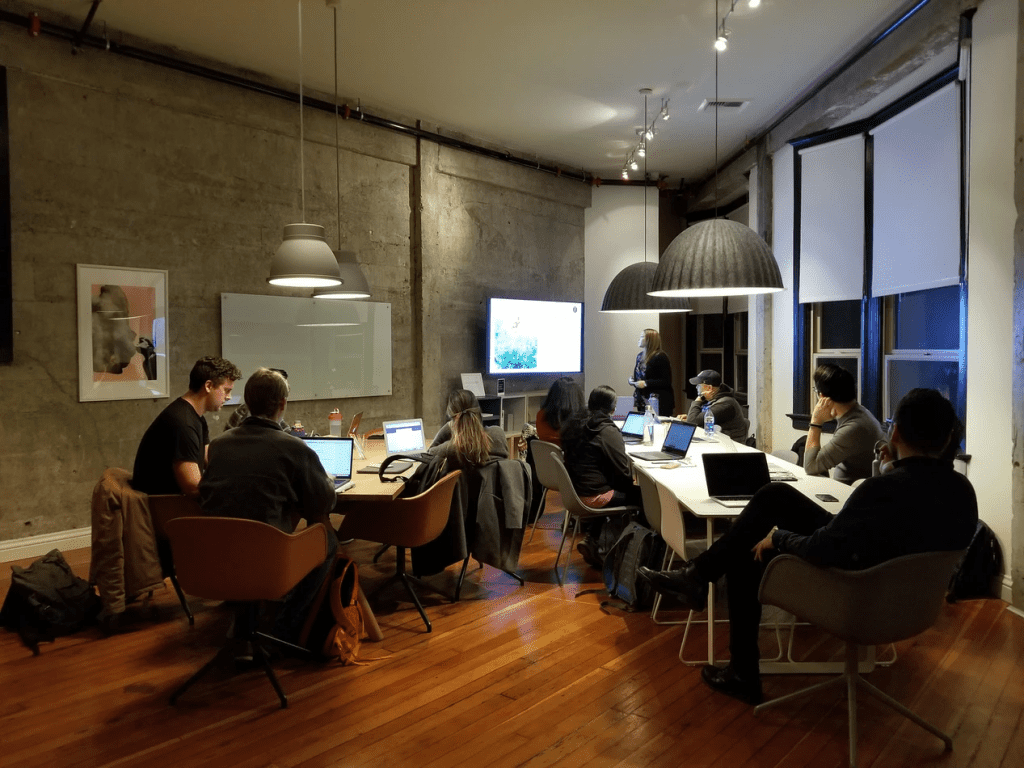How To Develop a Staffing Plan: A Step-by-Step Guide
If you’re looking for a new and effective way to improve how your team and you...

Do you want to provide a structure for your business’s labor needs and get the most out of your current resources and performance? You need a staffing model.
By creating a model of this type, you can ensure that your business has the right number of staff with the right number of skills to meet the demands of your industry.
In this article, the workforce-management experts at Sling discuss everything you need to know to build an effective staffing model for your business and to schedule your team for maximum efficiency and productivity.
A staffing model (also known as a staffing plan) is a group of reports, charts, graphs, and other data that measure and describe your business’s work activity, labor needs, and expenditures — both time and money — associated with the way your team operates.
At its core, a staffing model is a predictive tool that makes it easier for your HR department to identify annual business needs and formulate a plan to meet those requirements.
In addition to establishing the number of team members your company needs to excel, a good staffing model also reveals the various skills and knowledge your employees will need in order to reach the goals you’ve set — both for them personally and for the business as a whole.
Armed with the data described above, your business will be better equipped to understand the current state of its workforce management, what it needs in the future, and what steps to take to get there.
How can you go about building an effective staffing model of your own? Read on to find out.

The first step in building an effective staffing model is evaluating your business goals and strategies.
With those goals and strategies in mind, your human resources department can begin to ask a number of important questions, including:
The answers to these questions will form the framework of your staffing model moving forward.
The next step in building an effective staffing model is to identify factors that might contribute or interfere with the plan.
These can be variables inside or outside your organization — such as a tight labor market, competitor activities, changing laws, or the evolution of a position within your business — that have a positive or negative effect on the way your team works.
An analysis of this type will help you evaluate what the talent supply will look like when it comes time to hire to fulfill your staffing model.
Once you know where you want your business to be — its goals — and the factors that affect its progress, you can then analyze the current state of your staffing model (even if you didn’t know you had one).
This step involves gathering data on such aspects as:
As we mentioned, you don’t need to have a staffing model in place to analyze the current state of your business.
Identifying the variables that affect your team and your organization right now gives you a starting point for developing a brand new staffing model for the future.
With the starting and endpoints in mind, you can envision what your business needs to accomplish the goals and implement the strategy created in step one.
You’re not settling on a solution just yet. Rather, you’re brainstorming on what it would take to transform your business’s goals from theory into reality.

After you know what your business needs to accomplish the goals of the staffing model, you can identify what is missing in your current team structure that is preventing you from moving toward your goals.
Your business may be missing another employee, a specific process, or a system of organization. Whatever it may be, this is the time to pinpoint where things are lacking so you can make the most of the next step.
Next, develop a solution that fills in the gaps in your staffing model and gets you further along the path toward assembling the team members you need to keep your business competitive.
You may conclude that you need another manager to help your team work effectively. Or you may conclude that you need some seasonal workers to support your full-time team during times of increased activity.
Whatever the solution may be, once you’ve identified your business’s needs, you can then take steps to recruit, hire, and retain the employees that will get you to your goal.
Your business will develop its own preferred methods of finding employees, but the most important aspect of it all is recruiting according to your staffing model. This may mean rehiring a past employee, contacting past applicants, or promoting from within.
But perfecting your recruiting isn’t just about the candidates you focus on; it’s also about the skills, information, and strategies you bring with you to the process.
Other recruitment strategies include:
You may even choose to set up an employee referral program or engage part-time employees instead of full-time employees.
However you choose to recruit potential team members, be sure to keep your staffing model — and the needs of your business — in mind at all times.
Hiring with your staffing model in mind is about more than just picking the best candidate from a stack of résumés.
It involves a whole host of activities, including:
When you exercise discernment and selectivity during your hiring process, you’ll be better able to hire the talent you need to satisfy your staffing model.
Once you’ve assembled the best team according to your staffing model, prioritize employee retention to keep that team together.
The right team will exhibit a mix of autonomy, adaptability, persistence, and self-awareness. When that happens, you know you’ve got yourself a winner and can take steps to foster unity within the group.
Here are some examples of the best ways to retain employees in your business:
This is just the tip of the iceberg, so get creative and come up with your own unique ways to prioritize retention.
When you do, your team and your business will experience intangible benefits, including:
Those benefits will pay dividends down the road as you continue to develop your staffing model.

Creating a staffing model can reveal much more than the number of employees your business requires to reach its goals and the skills those employees need to help you get there.
An effective staffing model also provides data that allows you to create the best work schedule for your team.
Once you know the type of work schedule on which your team will thrive, you can use the best software — Sling — to streamline the creation, organization, and distribution processes.
Sling gives you unprecedented control over your schedule so you can quickly and easily create schedules one month, two months, even six months or more in advance.
Sling even lets you create custom staff scheduling templates and optimize labor costs by setting wages per employee or position so you can see how much each shift will cost.
You can keep track of your labor budget and receive alerts when you’re about to exceed those numbers. This will help you save money, increase profits, and adhere to your staffing model.
Sling truly is the go-to solution for all your scheduling, workforce management, and staffing model needs.
For more free resources to help you manage your business better, organize and schedule your team, and track and calculate labor costs, visit GetSling.com today.
See Here For Last Updated Dates: Link
This content is for informational purposes and is not intended as legal, tax, HR, or any other professional advice. Please contact an attorney or other professional for specific advice.
Schedule faster, communicate better, get things done.